Projects
The Final Performance Evaluation of USAID Iraq Administrative Reform Project (TARABOT)
Project Description:
PMCG, in consortium with QED Group, is conducting a performance evaluation of USAID Iraq’s Administrative Reform Project (Tarabot), which aims to support the Government of Iraq (GoI) to achieve its strategic goal of improving the functions of public institutions, and the quality of service delivery through better governance and improved management of human and fiscal resources.
The main purpose of the final performance evaluation project is to assess which Tarabot activities have met project goals, and to what extent the project has strengthened the capacity of the Ministry of Planning and the Ministry of Oil in implementing supported systems and reforms, through the implementation of the public-administration/governance-strengthening program, focusing on management of the capital-investment budget, procurement, and oil assistance.
More specifically, PMCG is conducting the following activities:
- Assess the level of progress achieved in the pursuit of Tarabot’s key objectives
- Assess whether results were met during the final implementation phase
- Assess the degree to which reforms within targeted GoI institutions resulted in improved capacity, implementation of new public-sector reforms critical for improved management of public resources, and increased revenue
- Examine and identify the key areas of success and failures in areas supported by Tarabot
- Examine whether reforms provided to assist GoI’s partners, and which ones, have directly contributed to improved management of public resources and increased revenue
- Determine whether certain Tarabot sector investments, innovations, and system approaches increased the capacity of key GoI institutions to better manage their resources, improve support to other government entities, and increase revenues
- Examine the extent to which Tarabot was able to disseminate best practices and promote international standards, and assess how Tarabot program assistance affected the ability of the GoI to effectively manage its funds, and provide better services to citizens and within the government
- Assess the impact of Tarabot assistance to the Ministry of Planning operation as a disseminator of public procurement reform and improved management of capital-investment budget
- Assess the impact of Tarabot’s assistance on the Ministry of Oil and its six state oil companies, and their ability to reform procurement and project-management systems, improve delegation of authority, and resolve issues related to stalled refinery or export projects, and increase revenues
- Answer the following question: Which MoO state company has benefited the most from Tarabot’s assistance and why?
- Recommend how USAID could continue to build upon results achieved by Tarabot to improve the sustainability and long-term impact of prior public sector investments
Background information:
To improve the public administrative capacity of the Government of Iraq, USAID is partnering with executive offices, ministries, and governorates to strengthen public management institutions through better governance and improved oversight of human and fiscal resources. Taking a holistic approach towards its mission to assist partners, the Iraq Administrative Reform Project, also known as “Tarabot” (Arabic for “linkages), works to establish and strengthen institutions, systems, and processes in close collaboration with its Iraqi governmental partners.
Follow the links below for related projects:
Improving Deregulation and Fiscal Efficiency in Albania
Support to Policy Dialogue, Coordination and Reforms in Neighbourhood Investment Facility (NIF) Related Sectors in Armenia
Good Governance Fund
Support to the Center for Analysis and Communication of Economic Reforms under the President of the Republic of Azerbaijan in Legislative, Institutional and Economic Reforms in the Fiscal Sector
Subscribe
NEWS
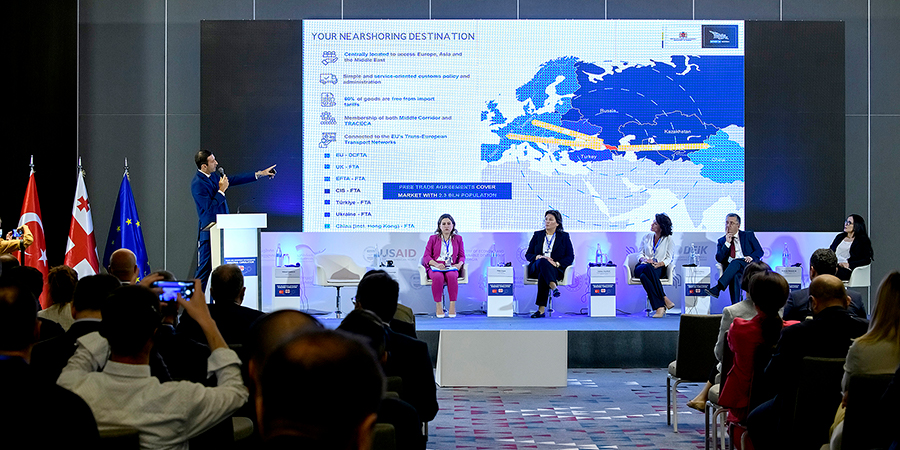
On September 9, we presented the findings of the research entitled “Investment and Export Promotion via Diagonal Cumulation between Georgia, Türkiye, and the European Union” at a forum organized by the Ministry of Economy and Sustainable Development of Georgia with the support of the USAID Economic Security Program, the EU, and GIZ.
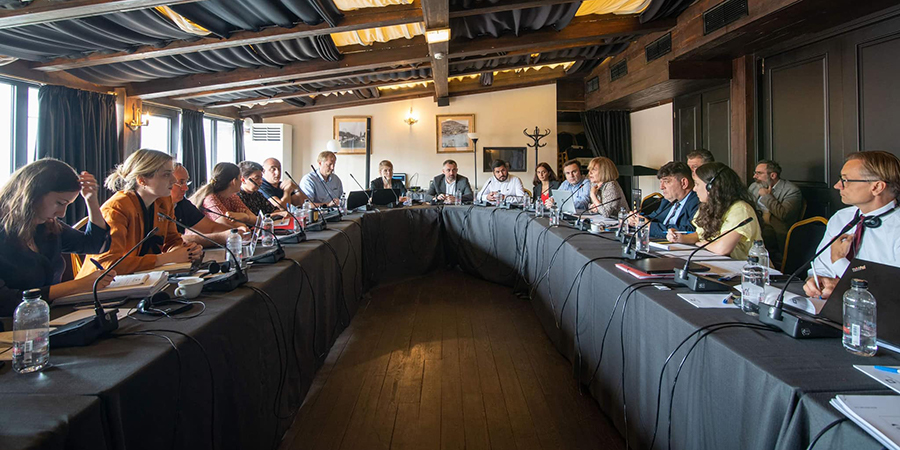
We recently started working on a new project entitled “Communal Infrastructure for Environment and Tourism Improvement - Lot 2: Accompanying Measures,” aimed at improving the living conditions of people in four Georgian municipalities (Baghdati, Vani, Samtredia, and Kazbegi) through improving the supply of hygienically-sound drinking water and environmentally-safe sanitation infrastructure.
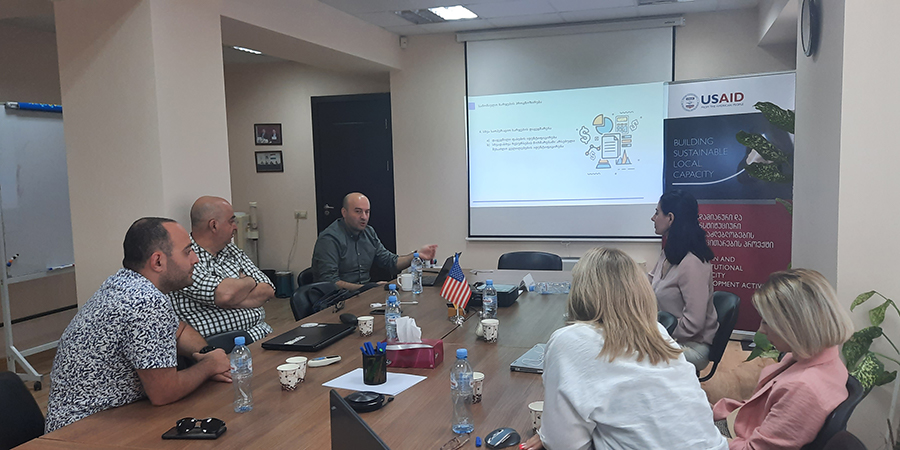
We recently completed a project entitled “Executive Roundtable (ERT) Session on Non-Profit Budgeting Process,” carried out by the USAID HICD Activity and implemented by the Kaizen, Tetra Tech company, aiming to facilitate collaboration, collective learning, and organizational development in the non-profit budgeting process with a cohort of selected organizations, including the Georgian Young Lawyers Association (GYLA), the Georgian Institute of Politics (GIP), and the Georgian Association of Social Workers (GASW).
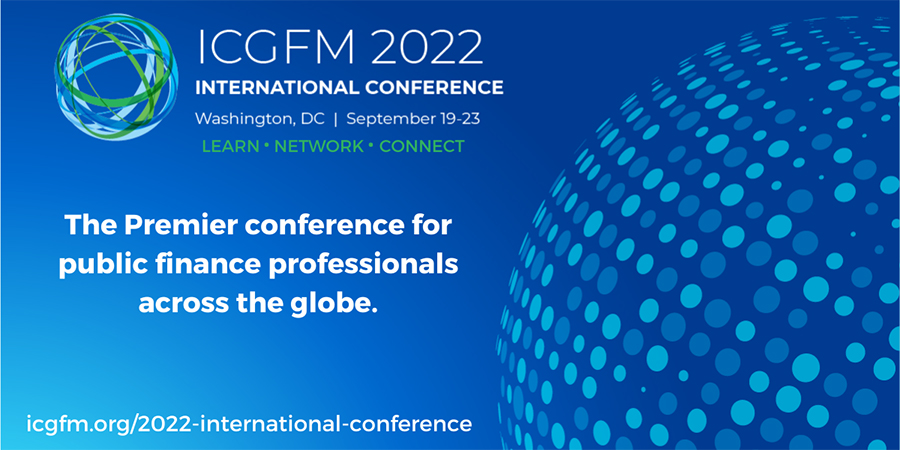
On September 19-23, the International Consortium on Governmental Financial Management (ICGFM) is hosting the 2022 International Conference at the University Club of Washington DC, offering the first opportunity in over two years for the global PFM community to gather in-person to network and connect with leading professionals and colleagues from across the world, in a unique and distinguished setting.
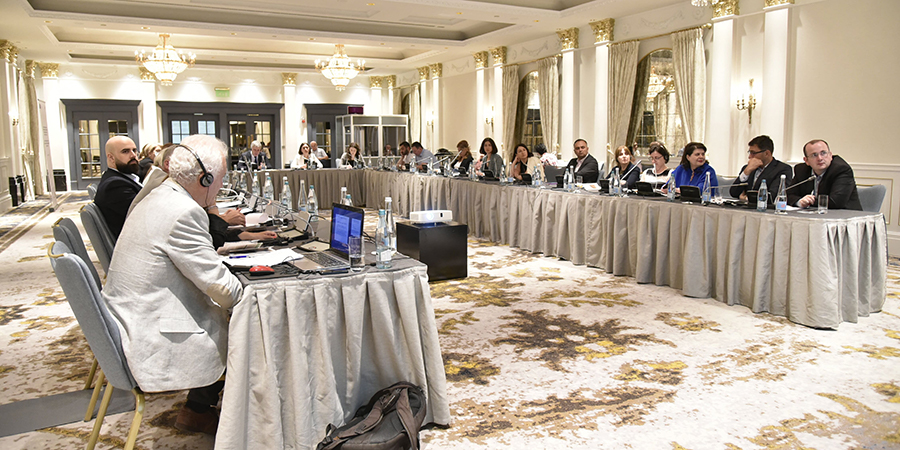
On July 28, PMCG supported a workshop organized by the EU and the Ministry of Environmental Protection and Agriculture of Georgia as part of the project “Support to Environmental Protection and Fight Against Climate Change in Georgia.”
PUBLICATIONS

In November 2025, hotel price index in Georgia decreased by 5.9% month-over-month (MoM), with the largest declines in Guria, Tbilisi, and Samtskhe-Javakheti. In November 2025, hotel price index in Georgia decreased by 4.2% year-over-year (YoY), with the largest declines in Imereti, Kakheti, and Samegrelo-Zemo Svaneti. The average price of a room ranged from 101 GEL to 390 GEL in November 2025.

In October 2025, the number of persons receiving a salary increased by 1.9% month-over-month and by 2.6% year-over-year. In October 2025, vacancies published on Jobs.ge decreased month-over-month by 12.2% and by 2.1% year-over-year. The number of vacancies in IT and programming category increased the most both year-over-year (+54.8%) and month-over-month (+5.0%) in October 2025. In Q3 2025, compared to Q2 2025, labor market expanded, as seasonally adjusted job opening rate increased and unemployment rate decreased, while labor market efficiency remained unchanged.
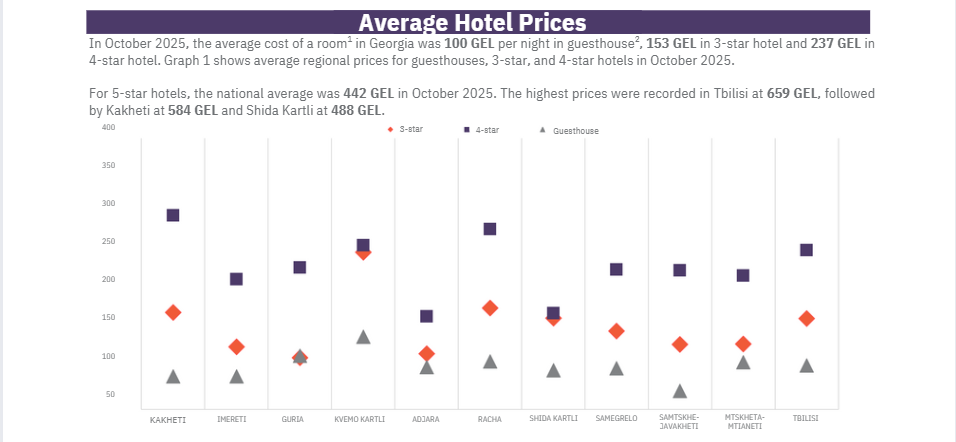
In October 2025, hotel price index in Georgia decreased by 9.6% month-over-month (MoM), with the largest declines in Adjara,Guria, and Kakheti. In October 2025, hotel price index in Georgia decreased by 2.3% year-over-year(YoY), with the largest declines in Mtskheta-Mtianeti, Samegrelo-ZemoSvaneti, and Kakheti. The average price of a room ranged from 100 GEL to 442 GEL in October 2025.
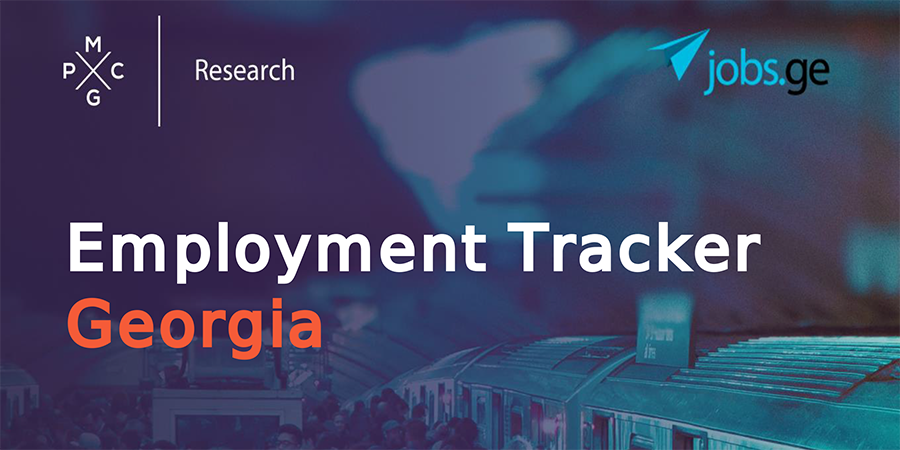
In September 2025, the number of people receiving a monthly salary increasedby 4.9%month-over-month and by 2.6% year-over-year. The total number of vacancies published on Jobs.ge increased month-over-month (+20.0%) and year-over-year (+4.7%). Over the past three months, the number of vacancies on Jobs.gein logistics declined by 4.5%, while those in management fell by 4.4% compared to the same period in 2024.
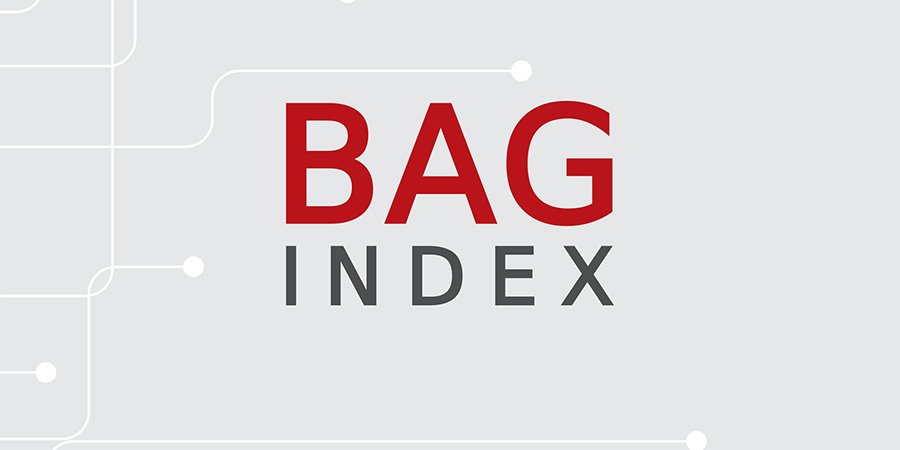
The Business Association of Georgia (BAG) Index is a joint product of the Business Association of Georgia, PMC Research Center, and the ifo Institute for Economic Research. The BAG Index summarizes the BAG Business Climate, BAG Employment Barometer, and BAG Investment Environment, which are calculated according to the assessments of the top managers of BAG member businesses and companies in their corporate group. BAG and PMC Research Center publish the BAG Index on a quarterly basis from Q4 2019.